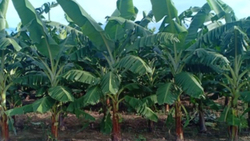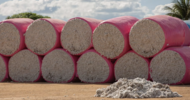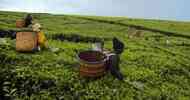Rafio Free Asia| 29 May 2019
Lao authorities allow Chinese firm to plant on land promised to dam collapse survivors
A Chinese-backed firm is growing bananas on land promised by the government of Laos as compensation to survivors of a 2018 dam collapse that that has been described as the country’s worst flooding in decades, RFA’s Lao Service has learned.
The disaster occurred last July, when a saddle dam at the Xe Pian Xe Namnoy (PNPC) hydropower project collapsed following heavy rains, inundating 12 villages and killing at least 40 people in Laos’ southern Champassak and Attapeu provinces, and leaving many more missing.
The 2,000 hectare plot of compensatory land near Pindong village, Sanamxay district, Attapeu province was cleared by authorities three months ago on the understanding that the victims of the disaster would be able to grow crops there during this year’s rainy season, but the authorities recently allowed a Chinese investor to plant bananas there.
In an interview with RFA’s Lao Service Tuesday, Attapeu province Governor Leth Xayaphone said the Chinese firm is using the land to help the survivors.
“The provincial and central government cleared the land for the victims, but the victims don’t have the financial resources required to grow their crops because they have been suffering from great losses [because of the flood],” he said.
“The province doesn’t have the ability to provide them with financial assistance, but we gave the land to the victims, the land belongs to the victims, but the [Chinese] company is stepping in to help the victims with capital and the benefit will be shared,” he added.
The governor did not elaborate on how the company would share benefits or what form the benefits would take, but he insisted that the authorities did not give the land to the investor. He said they allowed the company to help the villagers grow bananas and to create jobs for survivors of the flood.
When asked about the concern by many of the survivors about the use of harmful chemicals, a common problem that has made banana plantations unpopular in Laos, Xayaphone said that the province would increase inspections and monitor chemical use on the new banana plantation.
“We’ve learned our lesson by [observing] the impact of Chinese banana plantations on [the environment] in the northern provinces. We’ve signed a memorandum and the company has agreed to abide by strict rules and regulations on chemical use,” he said.
Banana ban ignored
The revelation that bananas are being grown on land set aside for flood victims came just two weeks after the Lao government vowed to enforce a ban on the granting of land for new banana plantations and punish local officials who violate it, amid a controversy over the illegal overuse of pesticides that residents say are causing pollution and destroying their livelihoods.
Concerns over chemical run-off from heavily polluting Chinese-owned banana plantations led in January 2017 to government orders forbidding new banana concessions, though many farms still operate under contracts valid for several more years.
But local officials have granted a number of firms land for new banana plantations in recent months, despite the government ban, in provinces that include Xayabury, Oudomxay, Borikhamxay, and Savannakhet, while other companies are negotiating for new farms elsewhere in the country, such as Vientiane province, sources told RFA.
Survivors of the Xe Pian Xe Namnoy disaster are concerned that the land they were promised is going to a Chinese developer without their having any say in the matter.
“At first, the authorities cleared the land for us, the victims here living in these two villages,” said a resident of Pindong village, a survivor of the dam disaster.
“But after having cleared it, they just gave it to the Chinese, who have already hired some of us to plant bananas for them,” he added.
Another survivor said, “The villagers are all opposed to the Chinese plantation. We fit into two groups. The first are the [original residents] of this village who are concerned about the use of chemicals and how it will affect their health. The second group is the 150 families that are victims of the dam collapse who now live here in the village, and we wonder if the authorities gave that land to the Chinese, do we have land to farm [for ourselves?]”
Meanwhile a resident of Attapeu province told RFA that a Chinese investor in league with a Vietnamese company are working to expand a 3,000 hectare banana plantation in Samakkhixay district to 10,000 hectares.
To do so they will need to cut down rubber trees planted years ago by the Vietnamese firm in the 7,000 hectare plot adjacent to the banana plantation.
With rubber prices lower than expected, they hope that switching to bananas will help to cover their losses. Currently about 100 Laotians work on the Chinese plantation.
Reported and translated by RFA’s Lao Service. Written in English by Eugene Whong.














